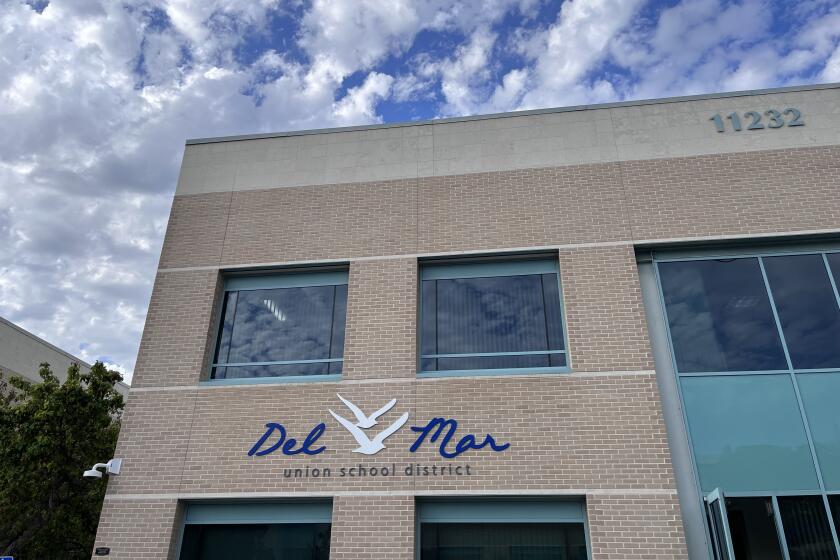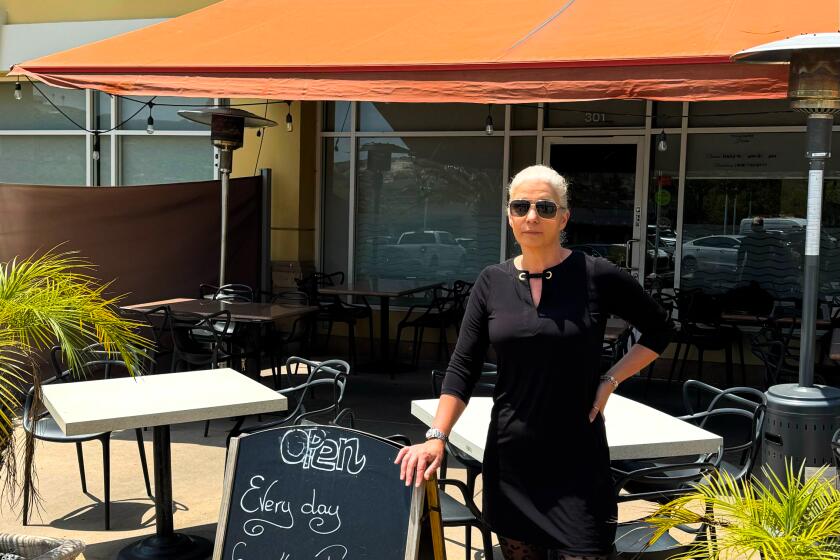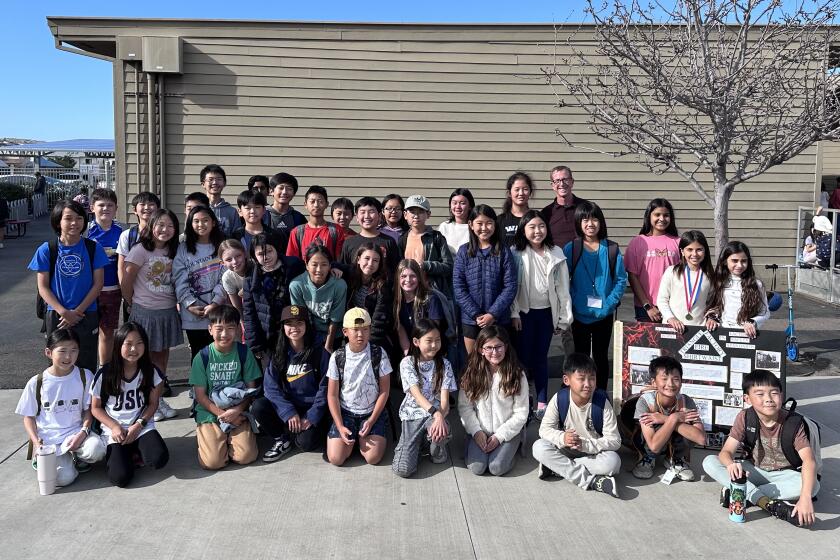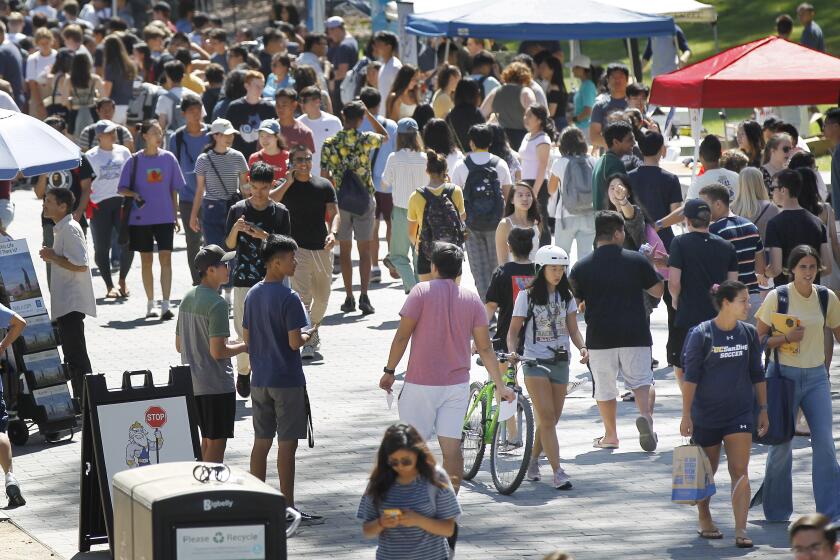Carmel Valley board hears how gas tax repeal could impact local roads
As Californians gear up to cast a vote in November whether or not to repeal the state’s gas tax, local representatives said that the vote could impact local infrastructure projects such as the widening of the SR-56. At the May and June Carmel Valley Community Planning Board meetings, a representative for Assemblyman Brian Maienschein reported that Caltrans had been expecting to begin the final design for the widening of the 56 from Carmel Valley Road to the I-5 interchange by the end of this year.
“The information they gave us was ‘We’ve got this great project for you’…the caveat at the end was ‘if the gas tax repeal wins in November, then all bets are off’,” said Bob Knudsen, representative for Maienschein’s office.
The messaging was troubling to Pacific Highlands Ranch resident Bruce Cameron as SR-56 is one of the more urgent needs for the entire area as traffic on the freeway is a “nightmare” that impacts local neighborhood streets.
“I’d hate for something like an infrastructure project to be held hostage,” Cameron said.
California State Senator President Pro Tem Toni Atkins was in attendance at the board’s June 28 meeting and spent some time addressing the gas tax.
“It’s not easy, it’s not simple, people are upset. California is not an inexpensive place to live,” Atkins said. “I’m happy to answer any questions regarding gas taxes because I believe it’s my responsibility, I voted for it. There’s an upside to it and there’s a downside to it and I recognize that, but I’m not afraid to have the conversation.”
Senate Bill 1 was passed by the state legislature in 2017, raising the gas tax by 12 cents per gallon and the diesel fuel tax by 20 cents and increased annual vehicle fees by $25 to $75 per year. It also added a new $100 annual fee for electric vehicles starting in 2020.
The Give Voters a Voice Campaign turned in nearly 950,000 signatures in order for the proposition to be placed on the ballot—the campaign’s honorary chair is local gubernatorial candidate John Cox. According to a new statewide poll by USC Dornsife/Los Angeles Times, a repeal of the tax is supported by 51 percent of registered voters in the state. Per the poll, support to repeal the tax is at 64 percent in the county of San Diego.
Atkins said the gas tax represents $5.2 billion in the state’s budget this year for road repair.
“Roughly half of that goes back to the communities directly for local jurisdictions to decide how to spend it, so every city in the county gets money from the gas tax,” Atkins said.
Since the tax was approved last year, San Diego County has received $866 million—the day before the meeting, Atkins celebrated the opening of the new Genesse Avenue bridge project, which expanded a six-lane overpass to a 10-lane bridge with added sidewalks and bicycle paths. While a lot of the project was funded by local money, some came from the state, she said.
Atkins said the city of San Diego will get money that will likely be used for street paving and resurfacing projects but when it comes to capital projects, those will go through SANDAG.
“It will give them more money to do projects faster,” Atkins said. Atkins noted that SANDAG currently has a project list with more projects than it has funds for and it will be vital for community planning boards like Carmel Valley to advocate with the city on what the priorities are.
Steven Hadley, representative for San Diego City Council President Pro Tem Barbara Bry, said their office has already stated that the widening of SR-56 is a priority that should be completed before the proposed I-5 and SR-56 flyover connections.
In 10 years she said the state will spend $52.5 billion and that will get 50 percent of state roads in fair or good condition and get almost 70 percent of local roads at fair or good condition. Atkins said in November, voters can decide whether that $5.2 billion annually in the budget that goes toward street resurfacing, bridge repairs and other transportation projects is important.
Planning board member Don Billings said he is still making his decision, taking into account what gubernatorial candidate Cox has stated, that California spends four times per mile to build a road than the state of Texas.
“Speaking as an average citizen, when I look at the type of projects that Caltrans does, the money they spend and the public benefit, it sort of rings true to me what John Cox says,” Billings said, referencing as example the $2 billion to add a carpool lane on I-5, which will probably take a decade. “It seems to me that making the case to the public to not vote to repeal the gas tax is based on demonstrating to the public a real metric that Caltrans is a good steward of our money, that they spend it wisely, they spend it efficiently and that they rank projects not on some political pressure but on some sort of methodology that makes sense.”
Atkins said when they conducted the hearings about the tax in Sacramento, it was not easy because they did have to address issues around Caltrans.
“Caltrans is a bureaucracy…sometimes I wish they could bow to political pressure and we could get a project done but they don’t. What we do need to do is work efficiently and respond,” Atkins said.
Atkins said that is true that projects are more expensive to do in California due to different regulations that citizens have voted on relating to greenhouse gas emissions, the Climate Action Plan and labor issues. She remarked that the state is the fifth largest economy in the world and it is their job as the legislature to do more monitoring and oversight.
“We are trying to restore faith in government that we’re actually going to put the money where it needs to go,” Atkins said.
The legislature put Proposition 69 on the ballot this June, requiring that certain revenues from SB 1 will be used for transportation. It passed with 81 percent of the vote.
In June, the Senate Rules Committee confirmed an independent auditor as part of the gas tax to oversee procurement and projects, an effort to enhance accountability and transparency.
Atkins said she wanted to take the “reasonable criticisms and critiques” she heard at the meeting and put them before the people who are responsible—making sure they are working to reduce overhead, and responding quickly and efficiently to what constituents are asking for, such as maintenance on the side of the road, a complaint her office hears often.
“It’s a hard case,” Atkins said of the question that voters will answer this November. “I hope I can make it to you because I want to be able to have money come back into San Diego.”
Get the Del Mar Times in your inbox
Top stories from Carmel Valley, Del Mar and Solana Beach every Friday for free.
You may occasionally receive promotional content from the Del Mar Times.









